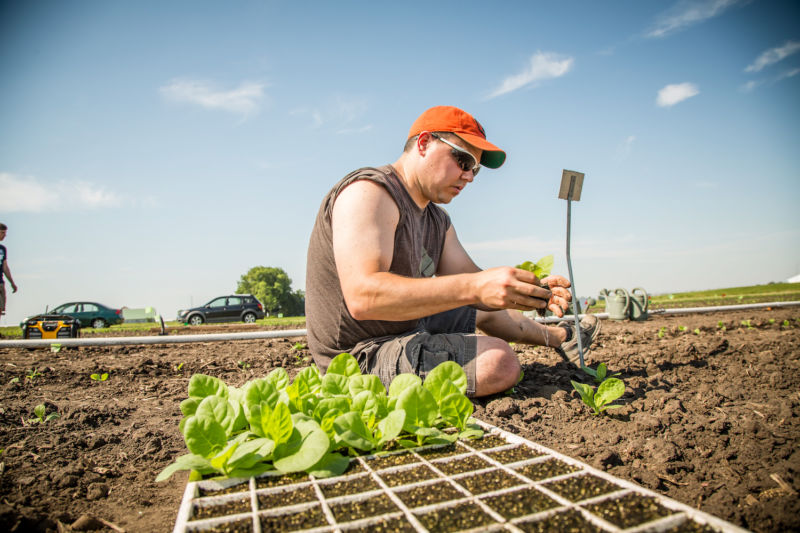Re-engineering photosynthesis gives plants a 40% growth boost
Ars Technica » Scientific Method 2019-01-03

Enlarge / A scientist transplants engineered tobacco for testing. (credit: Brian Stauffer/University of Illinois)
The vast majority of life on Earth depends, either directly or indirectly, on photosynthesis for its energy. And photosynthesis depends on an enzyme called RuBisCO, which uses carbon dioxide from the atmosphere to build sugars. So, by extension, RuBisCO may be the most important catalyst on the planet.
Unfortunately, RuBisCO is, well, terrible at its job. It might not be obvious based on the plant growth around us, but the enzyme is not especially efficient at catalyzing the carbon dioxide reaction. And, worse still, it often uses oxygen instead. This produces a useless byproduct that, if allowed to build up, will eventually shut down photosynthesis entirely. It's estimated that crops such as wheat and rice lose anywhere from 20 to 50 percent of their growth potential due to this byproduct.
While plants have evolved ways of dealing with this byproduct, they're not especially efficient. So a group of researchers at the University of Illinois, Urbana decided to step in and engineer a better way. The result? In field tests, the engineered plants grew up to 40 percent more mass than ones that relied on the normal pathways.